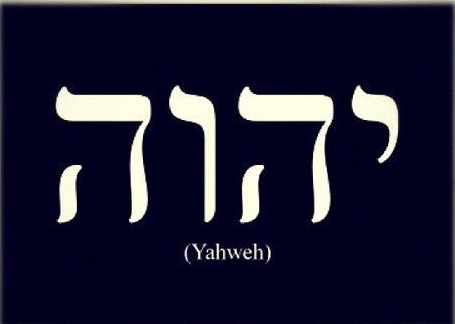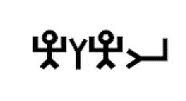
Your Salvation is on the tip of your tongue!
or
What’s in a Name?
“And I will pour out on the house of David and the inhabitants of Jerusalem a spirit of grace and supplication. They will look on me, the one they have pierced, and they will mourn for him as one mourns for an only child, and grieve bitterly for him as one grieves for a firstborn son. Exodus 3:14,15
And when they came to a place called Golgotha, which means Place of a Skull, they gave Him wine to drink mixed with gall; and after tasting it, He was unwilling to drink. And when they had crucified Him, they divided up His garments among themselves by casting lots. And sitting down, they began to keep watch over Him there. And above His head they put up the charge against Him which read, “THIS IS JESUS THE KING OF THE JEWS.” Matthew 27:33-37
The plan of God is so magnificent and yet so simple, it is hard to understand how the Jews missed it when they so close to the Hebrew Man, Christ Jesus, their Manuscripts were in Hebrew and their Main language was Aramaic which is a derivative of Hebrew. It was so close, it was right on the tip of their tongue!
It just doesn’t mean as God told Moses “I am who I am,” Exodus 3:14,15. It has a deeper and most descriptive name than that. When Sanhedrin they spoke the name Jesus, “Yeshua,” at the trial, they were speaking the Person of Salvation “God saves.” When they spoke the name of God, “Yahweh,” they were speaking the Plan of Salvation.
God’s “name” was the very meaning of the plan of salvation. Yahweh means “The Hand, Behold, the Nail, Behold.” Does that sound familiar to you here at Easter? You see, the “name” of God isn’t so much a “name” as we think of it, God’s name is a description of God. Why, because His greatness surpasses the finiteness of our minds and His magnificence, including His loving plan for us can only make sense to us if it is described.
 Ancient languages are all descriptive languages. People from difference countries and background drew pictures and used signs to communicate, so words became written descriptions as well as as having a separate oral meaning.
Ancient languages are all descriptive languages. People from difference countries and background drew pictures and used signs to communicate, so words became written descriptions as well as as having a separate oral meaning.
Yod, Hey, Vav, Hey which makes up the four primary letters of “Yahweh” have individual meaning. Additionally, ancient words had no real vowel sounds, the speaker supplied those. You also may be surprised to know that their was no future tense in ancient Hebrew the way we speak and write now. That is the subject of another Bible study.
 A “yod” was a symbol of a hand, wrist or arm. A “hey” was the symbol of raised hands as in “ahah or behold!” A “vav” was a symbol of a nail, or peg. So put this description together: a hand, behold! the nail, behold! This is accepted Biblical archaeology, it’s not me making this up. How could you not miss the fact that this is crucifixion! And when you put this together with the name of Jesus, “God saves,” you have a clear picture of the magnificent plan and person of God.
A “yod” was a symbol of a hand, wrist or arm. A “hey” was the symbol of raised hands as in “ahah or behold!” A “vav” was a symbol of a nail, or peg. So put this description together: a hand, behold! the nail, behold! This is accepted Biblical archaeology, it’s not me making this up. How could you not miss the fact that this is crucifixion! And when you put this together with the name of Jesus, “God saves,” you have a clear picture of the magnificent plan and person of God.
This is proven in archaeology. In the 1968, a skeleton was found with nails driven through its feet and hands. A 19cm nail was driven through olive wood and into the heels so hard it bent. The other nails were driven through their wrists. The Greek word for hand includes the wrist and finger.
 God had this procedure of crucifixion nailed down since the beginning of time. When the prophet talked about looking at the one who was pierced (Zechariah 12:10), stoning was the authorized method of death among the Jews. It wasn’t until later, the Phoenicians invented crucifixion and later picked up by the Greeks and Romans. The Roman records seem to indicate crucifixion in the third century B.C. until the first Christian emperor, Constantine, outlawed it in 337 A.D. By then, the cross had become a symbol of Christ and His followers.
God had this procedure of crucifixion nailed down since the beginning of time. When the prophet talked about looking at the one who was pierced (Zechariah 12:10), stoning was the authorized method of death among the Jews. It wasn’t until later, the Phoenicians invented crucifixion and later picked up by the Greeks and Romans. The Roman records seem to indicate crucifixion in the third century B.C. until the first Christian emperor, Constantine, outlawed it in 337 A.D. By then, the cross had become a symbol of Christ and His followers.
God is passionate about your salvation and the salvation of the world. It’s in the unique blood of Jesus, and it represents His very name.
